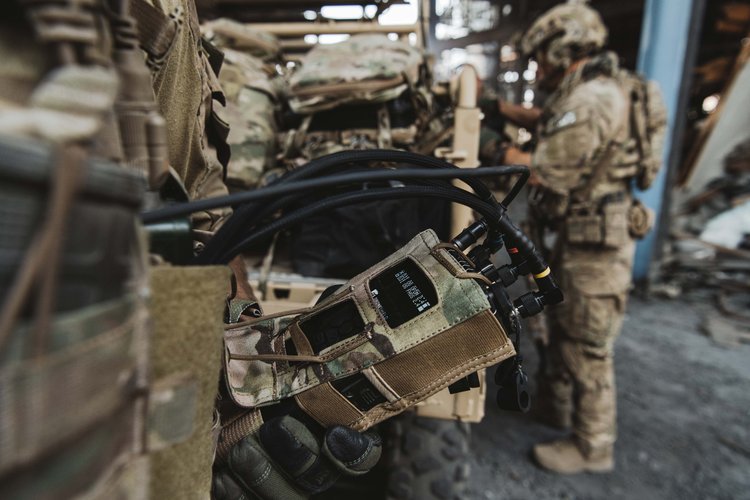How C-UAS Enables Major Defence Programs
Australia is under way to invest billions in much-needed major Defence programs, including (the much reduced but still significant) LAND400 for Infantry Fighting Vehicles, submarines, HIMARS long range strike capability vehicles, Northern Bases overhaul and much more.
Drones have rapidly emerged in the last decade from an obscure and hard to control toy, to a formidable yet cheap and expendable defence tool. A $2k drone can do 10-20km flight time, carry up to a few kg in payload, contain sophisticated sense-and-avoid obstacle technology, ability to fly with satellite guidance only, and carry swarming capability enabling 100s, if not 1000s of drones to work as a team.
Ukraine (and earlier conflicts in Syria and Nagorno-Karabakh) have shown the true potential of small drones on the battlefield, performing reconnaissance, directing artillery strikes, dropping charges and performing cyber-attacks. Drones are starting to create a significant psychological effect on the soldiers as well (drone=impending artillery strike) – well documented in Ukrainian drone footage showing soldiers running away from a drone, such as this video.
It is critical for ADF to defend against scenarios where a $2k drone with a shaped charge takes out a $10m+ armoured vehicle or a tank (as per this Ukrainian drone footage), or blows out an F-35’s engine (potentially taking down the $100m+ asset and killing its pilot, given it’s a single engine plane).
An effective C-UAS system can start from tens of thousands of dollars and run up to $1-2m depending on the specs and the area protected. It is a negligible amount – can be considered an insurance strategy – to assure operations of highly expensive, exquisite defence platforms, which can focus on performing their primary tasks without a risk of a drone scouting out their location and movements or dropping a charge on them.
Similarly, a C-UAS system can ensure reliable base protection against drones, especially in low-manned, remote, but strategically critical bases in the Northern Territory, whose priority was highlighted in the Defence Strategic Review
In Defence, key doctrine is to fight the next war, not last war – and drones, as one military expert put it, are comparable to the impact body armour had in WWI. While drones (and C-UAS) don’t replace conventional weapons – tanks and artillery are still the king of battlefield in Ukraine - drones add a key element of lower airspace superiority, reporting real time intelligence and carrying ability to take out a much more expensive platforms, while remaining expendable.
Drone technology will continue to rapidly improve, like any tech does. Current trends point to further advances in swarming capabilities (including fully autonomous drones), drones across multiple domains (ground, water surface, under water), and the ability to be armed and fire weapons on their own – like this Chinese drone.
DroneShield RfPatrol handheld C-UAS system.
What makes a good counterdrone/C-UAS system?
One size doesn’t fit all: Dismounted, vehicle, ship and base protection requirements are all different (for example, dismounted prioritises low size and weight, while base protection is about best possible range and capability suite)
High probability of detection and low false alarm rate: the challenge of detecting drones is that they operate in a sea of clutter (be it radiofrequency clutter as they operate on same ISM bands as a lot of other equipment, or radar clutter being small, low speed objects flying close to the ground). Multi-sensor systems, preferably with an AI-based sensorfusion methodology are best at reducing operator’s cognitive burden.
Reliable defeat: some technologies such as cyber/protocol manipulation, can take up to 30-60 sec per single drone (especially challenging for drone swarms) and are severely limited in the number of drone models they are effective against. Smart jamming on the other hand is instantaneous effect and universally effective (when C2 and GNSS bands are jammed).
Autonomous operation: the system should have a mode to detect and defeat autonomously, given drone speeds and an attack/incursion that can happen any time of day or night.
Regular firmware updates and library-less systems: drones evolve quickly, and regular firmware updates to the C-UAS systems are beneficial, similar to anti-virus software. Algorithms that don’t rely on library-based pattern matching will work best due to 1000s of drone types out there.
RF based detection and smart jamming as an effector are optimal as base layer: multi-sensor/multi-effector systems can be great, but often encounter constraints around system size and budget. RF-based detection and smart jamming are tried-and-proven methods for rapid drone detection and takedown, while minimising collateral damage.
The last, and arguably most important thing, is for Australia to acquire locally developed capability when it already has such technologies developed in its own backyard – that allows for custom work to optimise for Defence’s requirements, done by local personnel with appropriate security clearances, utilising and strengthening Australian supply chain.


